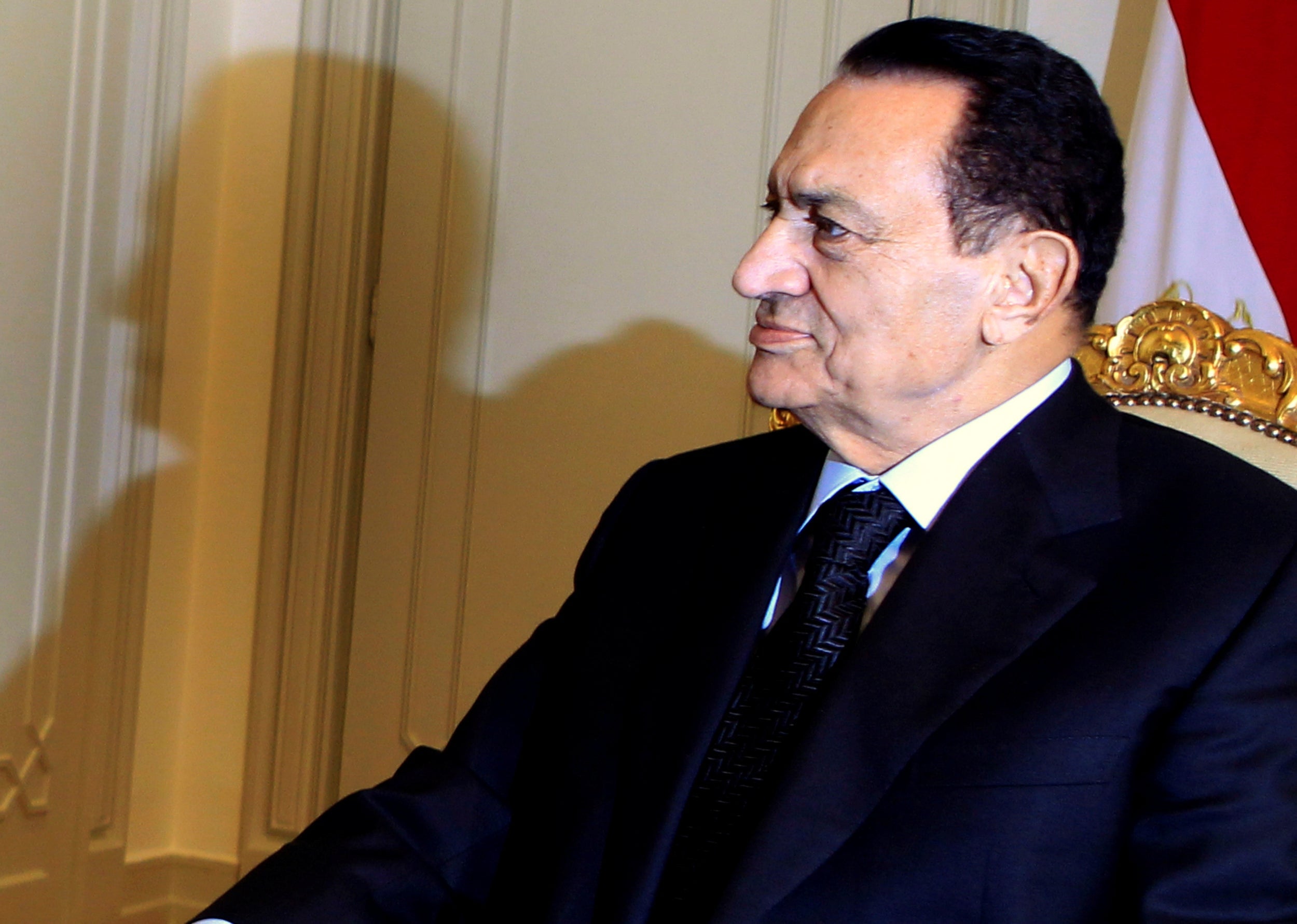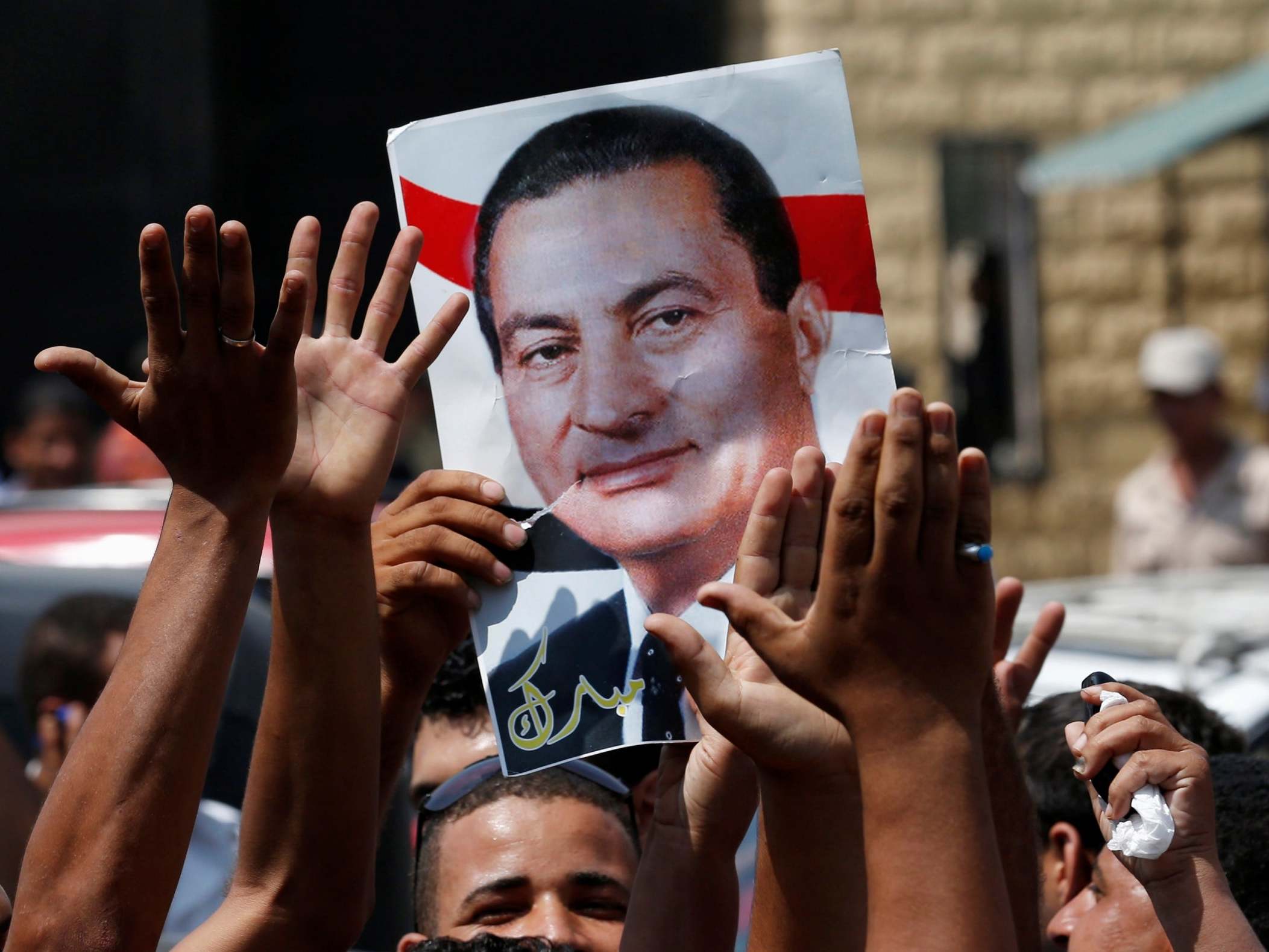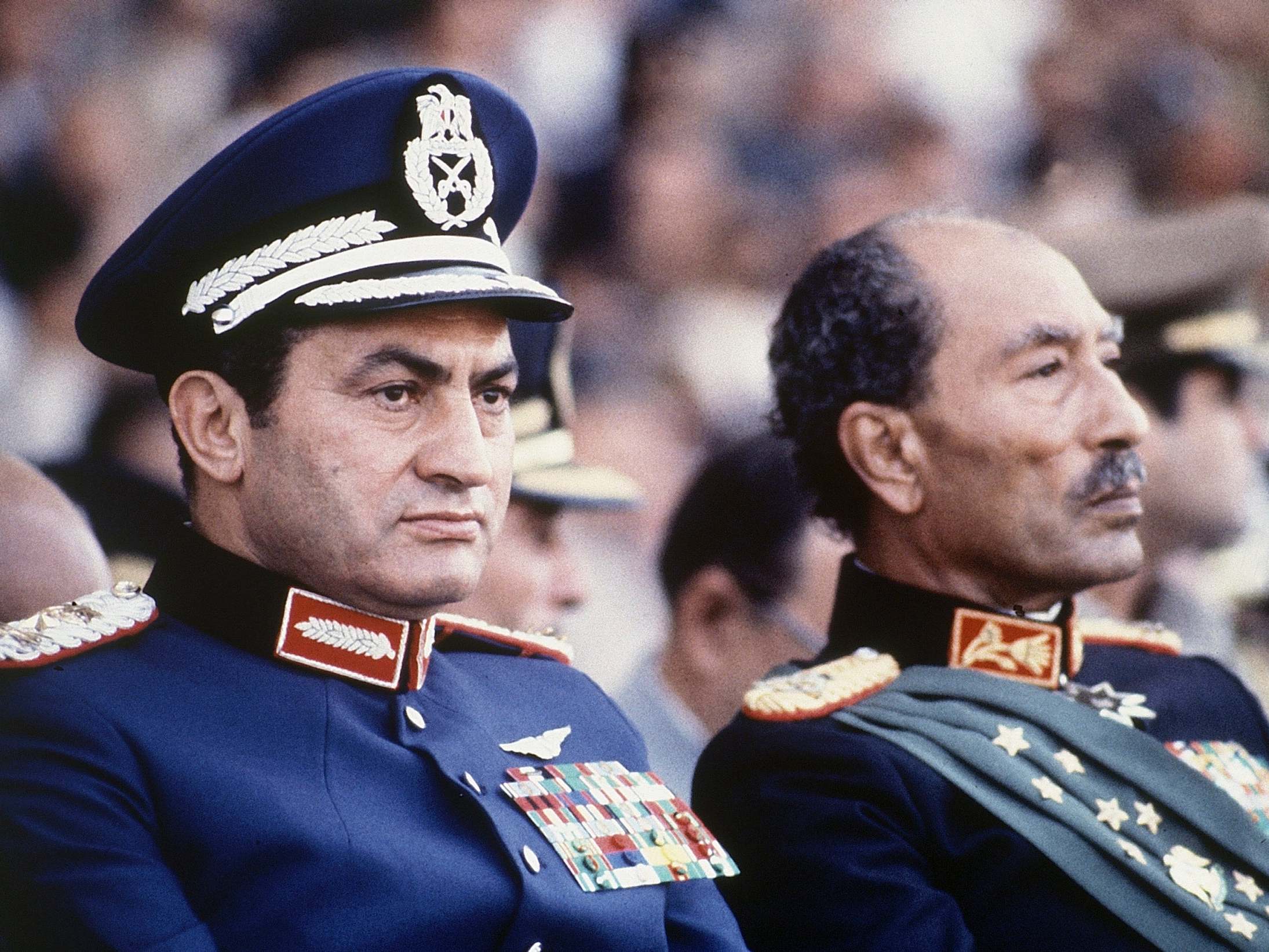Hosni Mubarak: Egyptian dictator toppled in the Arab Spring
In power for three decades, he was regarded by the west as a stabilising influence in the region but his brutal suppression of opposition brought about his fall

Hosni Mubarak, dictator of Egypt for three decades, came to the country’s presidency unexpectedly with the assassination of his predecessor Anwar Sadat. Mubarak, who has died aged 91, then remained in office for an unexpectedly long stretch before he was brought down, again unexpectedly, by the Arab Spring of 2011.
During his time in power he was regarded by many in the west as providing a measure of stability in his country. But with his brand of stability came stagnation in both political and economic terms. His regime made no significant moves towards democracy, and maintained implacable suppression of opposition.
Mubarak was chosen by President Sadat as his deputy mainly because he was little known and, appearing to have no political ambitions, presented no threat. Yet once the presidency was thrust on him by Sadat’s death in October 1981, Mubarak showed himself to be a more accomplished politician and diplomat than his predecessor. He managed to extricate Egypt from the economic morass it was in, and achieved international stature in spite of the fierce manner in which he quelled an Islamist uprising.
Mubarak spent all his life before government office in the Egyptian air force, and by good luck was not in a position of responsibility during the 1967 humiliation by Israel. He received most of his training in the Soviet Union, and was in Moscow, seeking to secure the cooperation of the Russians shortly before the October war of 1973, when Egypt and Syria launched their surprise attacks on Israel. Appointed air force commander just before that war, he was given credit for Egypt’s greatly improved air performance, and in 1975 was appointed vice president as a safe pair of hands.
Sadat’s assassination in 1981 triggered an uprising by radical Islamists that could have degenerated into civil war without strong action: Mubarak acted swiftly and ruthlessly, using troops to supplement police in some areas.
He had shrewd economic advisers, whose counsel he took in aligning himself with the US, for all his experience and presumed attachment to Russia. He was eventually able to negotiate a deal that gave Egypt a guaranteed subsidy every year almost equal to that given to Israel, Washington’s close ally in the region.

He was also able to diverge somewhat from the position America expected him to take. Visiting US officials pressing for change were fended off with warnings that if they forced him to go too far the Islamists would rebel. If they succeeded, he cautioned, there would be no Arab ally on which America could depend.
Mubarak felt, too, that he had paid his US dues when, after the Iraqi invasion of Kuwait in 1990, he mobilised Arab support for American intervention. He paved the way for others to follow in sending almost 40,000 men to fight alongside the western allies in liberating Kuwait.
Always anxious to seek a consensus, he was deeply unhappy at what he complained was American lack of action to restrain Israel. He saw his role in his later years as a mediator who could bring differing elements together, and was often successful in organising meetings if not always in achieving results.
Like other Middle Eastern leaders he had no liking for Palestinian leader Yasser Arafat, though Egypt retained its influence with the Palestinians, if only because it was the only Arab country that could stand up to Israel if it came to the worst. So Mubarak sought to influence the Americans to rein back the Israelis, and the Palestinians to accept less than they sought.
At home he had to contend with an ever-increasing population and a difficult tourist trade. His people, meanwhile, had to contend with his repressive regime that ignored human rights and stood accused of torture and tens of thousands of illegal detentions.
He came close to death at least six times, for example when attacked by a knife-wielding malcontent in Port Said, and when ambushed by gunmen while on a trip to Ethiopia.
Unlike his predecessor, he was careful never to appoint a vice president, even when one of the assassination attempts against him produced public pressure for him to do so: more than those before him, he had to balance military and civilian support. But in the end the increasing prominence of his son Gamal prompted fears that Egypt might become the second Arab republican country, after Syria, to attempt to establish a ruling dynasty.
The Arab Spring was his undoing, erupting in Cairo in January 2011 when anti-government protesters clashed with police. After several weeks of disturbances and up to a thousand deaths that brought mounting pressure from Washington for him to step down, he resigned and handed power to the military.

Put on trial by the new regime, he was wheeled into the courtroom on a stretcher and placed in a cage – a once all-powerful dictator reduced to the epitome of political impotence. In June 2012, just before Muslim Brotherhood candidate Mohamed Morsi won the presidency, Mubarak was jailed for life for conspiring to murder protesters and sent to Cairo’s Tora Prison, though occasionally moved to the smart Maadi military hospital nearby due to claims of failing health.
Prison time would be short, however, as another military man, Abdel Fattah el-Sisi, overthrew Morsi the following year. As Sisi launched a crackdown on the Brotherhood, the case against the former president was dropped in 2014.
Three years later, following an appeal by the prosecution, Egypt’s top appeals court acquitted him, allowing him to return to his home in the upscale Cairo neighbourhood of Heliopolis, not far from the presidential palace he had occupied for nearly three decades.
He is survived by his wife Suzanne and two sons.
Hosni Mubarak, former Egyptian president, born 4 May 1928, died 25 February 2020
John Bullock died in 2010. Additional reporting by agencies
Join our commenting forum
Join thought-provoking conversations, follow other Independent readers and see their replies
Comments
Bookmark popover
Removed from bookmarks